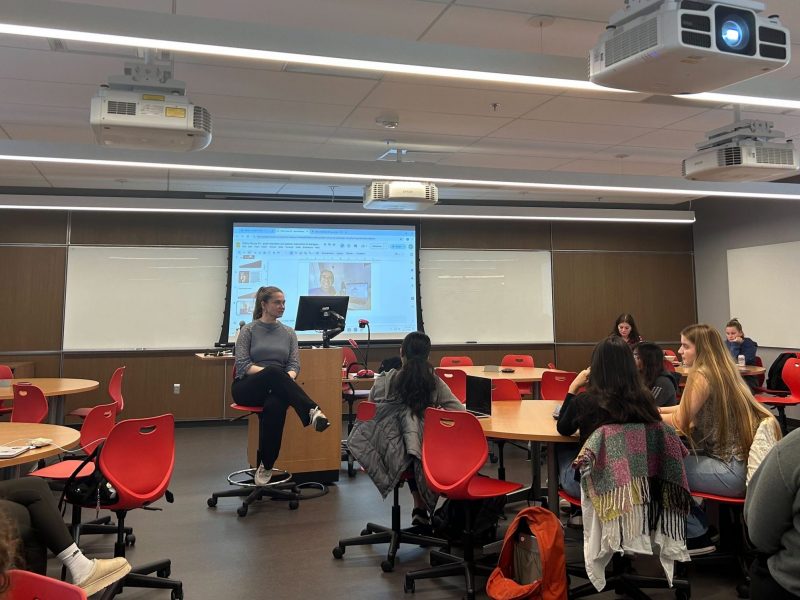
Alan Wagner, a senior research scientist at the Georgia Tech Research Institute, speaks to about 50 students and faculty members Wednesday morning in the A.V. Williams building.
In 2003, a pyrotechnics display malfunctioned at Rhode Island nightclub The Station, and the club caught fire.
Help arrived in about two minutes — the nightclub stood across from a fire station — but it took a mere 90 seconds for 100 people to die. Alan Wagner, a senior research scientist at the Georgia Tech Research Institute, came to the University of Maryland to discuss how his work can prevent tragedies like The Station fire from happening again with robot-human interactions.
Wagner spoke to about 50 students and faculty members Wednesday in the A.V. Williams Building about his work developing a robot people could trust that could easily lead them out of a building in case of an emergency.
“After my experience of dealing with the dark side of robots, these robots with the capacity for deception, I wanted to do a little bit on the light side of robotics, robots that can actually interact with people,” Wagner said.
Wagner said he sees a real need for a robot that can assist with evacuation in the case of an emergency, especially in the case of people crowding at an entrance and making enough room for firefighters to understand the situation.
“The real goal is to increase survivability,” Wagner said.
READ MORE: Robotics Realization Lab gives UMD students space to build robots
Josh Langsfeld, a mechanical engineering graduate student who researches robots, said he often attends these types of seminars but found this one particularly interesting.
“I think there’s definitely good potential,” Langsfeld said of Wagner’s research, citing robots’ ability to have extensive knowledge of building layouts and evacuation plans.
After extensive research into the potential design of the robot, Wagner decided to make a cylinder with wheels and movable arms that could be manipulated to point and gesture like a human’s can.
Wagner said his team asked subjects to follow a robot — in a simulation and in real life — in a variety of situations. The participants would see the robot fail or succeed in leading them to a destination, and they would then decide whether to follow the robot’s direction a second time.
In simulation, seeing the robot fail led the participants to lose trust in it. But in real life, almost every time, people trusted the robot despite its failures, he said.
In the real-life situations, participants were led into a room by the robot where they were asked to carry out a specific task: An alarm would go off and smoke would fill the hallway, and the participants had to choose to either follow the exit signs, go back the way they came or follow the robot’s instructions to leave out a door they had never been through.
Even when participants were told that the robot was broken, in the simulated emergency, they trusted the robot’s direction.
READ MORE: How robotics research at Univ. of Md. could one day save lives
Wagner added that he asked in an informal poll among roboticists at Georgia Tech about how many of them thought participants would trust the robots in these situations.
“The universal prediction they made was that nobody would follow the robot,” Wagner said.
Langsfeld said he was surprised to hear the results.
“It was useful to know that non-robotic people had much higher trusting rating of robots than I’d expect,” Langsfeld said.
Patrick Healey, a senior mechanical engineering major who was involved with robotics during high school, said he intends to work with automation when he graduates. He explained the surprising amount of trust humans have as a result of cultural exposure to robots.
“Think of R2-D2 in particular,” Healey said. “Americans have this idea of the helpful robot, that robots are designed to help you.”


